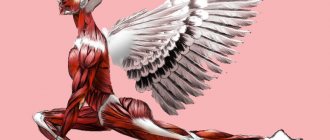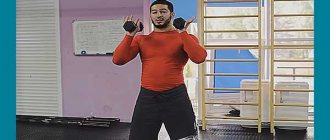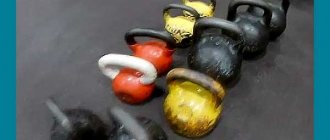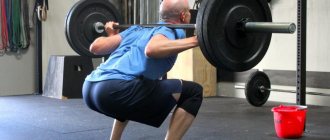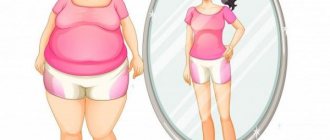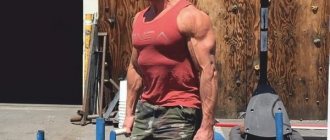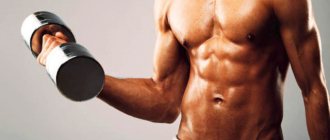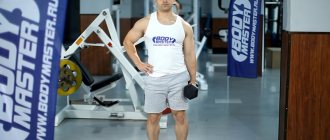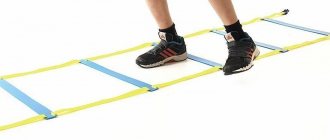Contents:
- Benefits of charging at work
- Workplace gymnastics options
Just think about it: on average, each person spends 10 years of his life at work, most of which we sit at the computer. The expression “sitting is the new smoking” even appeared abroad. It reminds us how much we underestimate the damage we cause to ourselves through a sedentary lifestyle.
Fatigue in the neck, back, wrists and arms is a leading cause of discomfort in the workplace. At the same time, everyone wants to be productive, multi-task and demonstrate their full potential. Exercises for exercise in the office can help with this.
Relaxing your neck
The main principle of physical activity during a sedentary lifestyle is a comprehensive warm-up, working out the whole body. You need to move from top to bottom, so we start from the neck. Let me immediately emphasize that this is a very sensitive, delicate area. A special approach to it is required, the most careful and careful attitude. Perform the complex for the cervical spine carefully and easily.
With the first exercise, we will stretch the muscles and ligaments of the neck between the shoulder, which tends downwards, and the head, tilting to the side - away from the hand.
Article on the topic
Salads and warm-ups. How not to forget about a healthy lifestyle during self-isolation
Starting position: standing, arms hanging along the body. Next, pull one hand down and head in the opposite direction. We create tension primarily by lowering the shoulder; we try to tilt the head less.
As you perform, turn your head slightly and twist it slightly to engage different muscle fibers. Continuing to pull your hand down, slowly tilt your head and smoothly move to the other hand.
My eyes are tired from the computer: what to do?
High load on the visual system and prolonged exposure to electromagnetic radiation, as well as high stress on the psyche as a result of exposure to computer games, can cause serious diseases that are easier to prevent in advance.
Ergohuman experts' opinion:
Timely prevention will help avoid overwork when working at the computer. Scientists recommend using the “short distance” method and organizing work so that you can definitely take minutes and even hours of rest when working on projects. As for gamers, it is important for them to independently control their daily gaming time and set limits. It is important to spend at least one day a week completely without immersion in the virtual world - this will become a kind of mental relief and will help to avoid many neurological diseases.
Improving muscle mobility
Another good exercise for relieving tension, improving muscle mobility and freeing up blood vessels is “pinching.”
Grab your left shoulder girdle with the palm of your right hand and firmly remember it with pinch movements. Then with your left hand - the right shoulder, then - the entire neck.
The pinches should be moderately strong and palpable.
Problems are gone! Warm-up at the workplace Read more
Phlebaven® for hemorrhoids
The flavonoids hesperidin and diosmin, obtained from plants, have shown good results in the non-surgical treatment of hemorrhoids. They increase the tone of the veins, improve microcirculation, and prevent exacerbation of the disease.4
According to the instructions, the drug Flebaven® is used in the treatment of acute hemorrhoids. The dosage and need for use in a particular patient is determined by the attending physician.5
References 1. Karpukhin O.Yu., Modern methods of treating hemorrhoids, Practical Medicine, 2003. 2. Rivkin V.L., Outpatient treatment of hemorrhoids, Hospital-replacing technologies: outpatient surgery, 2014. 3. Association of General Practitioners of the Russian Federation, Clinical guidelines for general practitioners (family doctors): hemorrhoids, 2014. 4. K.E. Mayat, Modern methods of treating hemorrhoids, Attending physician, No. 3, 2008. 5. Instructions for the drug Flebaven®.
Created by experts commissioned by KRKA PHARMA LLC
Rotate your pelvis
Starting position: standing, hands on your waist. Perform circular movements of the pelvis with maximum amplitude in both directions.
Next, let's change the starting position a little and repeat the exercise: your legs are wide apart, your knees are slightly bent: you seem to sit down a little, your hands rest on your knees. When we do this, the spine is stretched, the arms serve as a kind of spacer. You then twist the lower part of the spine and thus promote stretching of the lumbar region.
What can happen to a sedentary lifestyle?
A sedentary lifestyle has a detrimental effect on the entire body, leading to a number of serious illnesses and even premature death. Here are just some of its consequences:
- diseases of the musculoskeletal system, including joints and spine;
- metabolic disorders leading to obesity and a host of other unpleasant consequences;
- diseases of the cardiovascular system, a sharp increase in the risk of strokes and heart attacks;
- hormonal disorders;
- constant feeling of fatigue, depression, poor appetite, headaches;
- diabetes;
- the risk of tumors, including malignant ones.
"Raising the Sky"
The next mandatory element of our training is the “Raising the Sky” exercise. Starting position: standing, arms lowered, elbows straightened - with effort. Turn your palms at a 90 degree angle. They should be pointing down, parallel to the floor, with the fingers of both hands facing each other. Raise your arms up in front of you, keeping your elbows straight and your palms pulled towards you (as if you were supporting the ceiling), while taking a deep breath. Holding your breath, raise your head, look at your hands and stretch your hands up with all your might. You will feel tension in your lower back and back. Then lower your arms down to your sides, exhaling slowly. The head takes a vertical position.
Simple exercises for the neck, arms and thoracic spine
- Sitting on a chair, we tilt our head alternately to the right and left, trying to touch the shoulder.
- Slowly rotate your head clockwise and counterclockwise.
- Clasping your hands behind your back, bend your back as much as possible, throwing your head back.
- We alternately try to reach the shoulder blades with our right and left hands, and hold ourselves by the elbow with the other hand.
- We shrug our shoulders energetically, trying to raise them as high as possible.
- Putting your hands to your shoulders, alternately rotate them forward and backward.
- Having clasped our hands in front of us, we bend forward, lowering our head as low as possible.
- With our hands behind our heads, we turn left and right.
- With our hands behind our heads, we lean to the right and left.
- Clasping your hands above your head, we stretch upward.
We stretch with all our might
I recommend performing the “Herringbone” exercise as a final exercise. It stretches the whole body well and equalizes muscle tension on the right and left.
Starting position: standing, feet shoulder-width apart. Raise your arms to the sides, fold your palms over your palms, as swimmers do before jumping into the water. Slowly stretch up, rising onto your toes. Stretch as hard as you can. Keeping your arms stretched upward, lower your heels to the floor. It is important to maintain tension in your arms and body. From the outside it may seem that a person is hanging on a hook. Lower your arms down to your sides. Breathing is voluntary.
How has a person’s lifestyle changed in terms of calories:
| Ancestor 30 thousand years ago | Calories burned | Modern Russian | Calories burned |
| Hunting for a fleeing animal | 500 kcal | Buying food on the way to work | 150 kcal |
| Fruit picking | 250 kcal | Eating breakfast while sorting email | 100 kcal |
| Fleeing from an attacking beast | 500 kcal | Eating fruit while watching a video | 100 kcal |
| The Pursuit of Smaller, Affordable Breakfast | 600 kcal | Attending a two-hour meeting | 250 kcal |
| Transporting loot to the cave | 350 kcal | Walk to the store | 200 kcal |
| Cutting meat and preparing wood for the fire | 300 kcal | Talking on the phone | 50 kcal |
| Cooking and eating breakfast | 150 kcal | Reheating dinner in the microwave | 50 kcal |
Try to diversify your workday with exercise. Keep yourself in shape right in the office. You will need 10-15 minutes and a support group in the form of colleagues.
A set of effective exercises for dream posture
How many pull-ups should a man do at different ages?
If you don't have time to exercise
Sedentary work and a passive lifestyle are a one hundred percent guarantee of the formation of stagnation in the lower body and legs. Therefore, it is necessary to make certain movements every day to help fluid and blood circulate actively. Walking is ideal in this sense. Walk after sedentary work every day! Minimum 40 minutes. If you couldn't complete a set of exercises, at least take a walk. Walking is a very useful type of activity and a salvation when it is not possible to fully exercise.
Another useful habit for those who constantly sit is swimming. This is the most non-traumatic activity. Moreover, it is precisely this that provides a symmetrical load on both parts of the body. By working harder on your right or left side, you will simply swim in a circle. And if this is a pool, a swimming lane, you will have to strain the muscles of the right and left parts of the body equally. During swimming, all joints and muscles work, and under unloading conditions. In this sense, swimming is completely unique and irreplaceable!
Benefits of charging at work
Physical activity has a direct impact on our productivity and engagement. According to research from the American College of Sports Medicine:
- 60% of employees said their time management skills, mental performance, and meeting deadlines improved on the days they worked out.
- 27% of workers shared that they found it easier to cope with stress.
- 41% of employees reported higher levels of motivation at work.
Exercise not only keeps blood, glucose and oxygen levels high, nourishing the brain, but also releases endorphins into the body, improving your mood. The Canadian Institute of Health has shown that aerobic exercise strengthens the connections between neurons responsible for memory and learning.
If you don't have the opportunity or time to exercise in the office, start with simpler steps - use a standing desk. A study published in the British Medical Journal reported improved work engagement and fewer musculoskeletal problems in 146 employees. They also highlighted the following advantages:
- Those who sit for more than 6 hours a day show more signs of psychological distress. Scientists have found that standing at a desk improves mood and reduces depression, fatigue and tension.
- Working at a high desk increases productivity by up to 45%.
- You can lose 3 kilograms per year, since standing work burns 12% more calories than sitting.
Video: Gymnastics to correct posture and back exercises
A set of exercises for scoliosis, stoop, kyphosis, osteochondrosis
Dear friends!
This page contains a video: Gymnastics to correct posture and exercises for the back. This set of exercises for the back muscles was developed by Dr. Evdokimenko and Lana Paley, author of the book “Better than Yoga,” 20 years ago.
The back exercises from our video can be done at home. All you need to practice is any floor covering on which you will be comfortable practicing. Whether it's a carpet, a blanket or a gymnastics mat. And comfortable clothes, of course.
Our exercises will help you strengthen your back muscles and make your back slimmer. In addition, this back gymnastics helps correct various postural disorders. It is effective for grade 1 or 2 scoliosis, stoop, kyphosis, kyphoscoliosis and Scheuermann's disease.
In addition, our exercises are very useful for the initial stage of ankylosing spondylitis and osteochondrosis of the thoracic spine.
Gymnastics to correct posture and exercises for the back, part 1
Gymnastics to correct posture and exercises for the back, part 2
Gymnastics for the back, part 3. Light version.
How to alternate classes
This page presents 3 sets of exercises for the back. Part 1 and part 2 are the main ones. You can do them in turn - say, on Monday, Wednesday and Friday you do posture exercises, part 1. And on Tuesday, Thursday and Saturday (or Sunday) - part 2. And one day a week, Saturday or Sunday - day off.
Or you can do part 1 and part 2 at once, in one day - but then you need to do it not every day, but every other day.
The 3rd complex is additional, you can do it arbitrarily, regardless of the first 2 complexes. That is, you can perform this complex both daily and every other day. You can perform it together with any of the first two complexes, or do it separately. There are no hard and fast rules in this case - do exercises from the 3rd complex when it is more convenient for you.
About class times. You can do this gymnastics at any time. But it’s still better to do it in the afternoon (12 o’clock). Early in the morning, immediately after sleep, when all the muscles are still “sleeping,” this gymnastics is more difficult. And it brings a little less benefit. But you can do it in the evening! For example, after work or school. Then gymnastics, surprisingly, will add energy to you and breathe new strength into you.
About breathing. Please note that all strength exercises are performed while inhaling. Relaxation occurs as you exhale. Up – inhale, down – exhale.
Nuances. When you do sit-up exercises while lying on your stomach, support your core by tightening the muscles in your mid-back.
Very important! If at first, after doing the exercises, a mild headache or slight pain in the neck appears, this is normal. This is due to tension in the neck muscles that is unusual for the body. To relieve this pain, try a simple neck complex >>
About haste and pain. When doing gymnastics, do not rush. If you want to improve your posture, you will somehow have to learn to perform all the exercises slowly and smoothly, without jerking. A “snatch” effort can only “tear” the back muscles and will bring absolutely no benefit.
Listen to your feelings. If an exercise causes severe pain, give it up completely or reduce its amplitude.
But at the same time, remember that the feeling of aching pain after doing gymnastics is quite acceptable. Aching pain is caused by the inclusion of previously uninvolved muscle groups. And they will disappear after 3-4 weeks of training.
Contraindications to our gymnastics:
These exercises cannot be done: - immediately after operations on the abdominal and chest organs (you need to wait 2-3 months); - for colds and flu, with elevated body temperature; - during pregnancy, especially for a period of 3 months and above; in the first 3 months after birth; - women also need to skip classes on critical days; - for any ACUTE diseases of internal organs - for example, with exacerbation of pancreatitis or cholecystitis, with appendicitis, etc.; - for inguinal hernias; - with severely increased blood pressure, with significantly increased intracranial pressure; - with severe heart damage, severe coronary artery disease; the first 3-6 months after myocardial infarction; with aortic aneurysm; - the first 6 months after a stroke; with severe traumatic brain injuries and immediately after spinal injury; - for severe blood diseases.
Do with caution:
- with paroxysmal tachycardia, with atrial fibrillation; for heart defects; - for hypertension - do it under blood pressure control before and after classes! - with hyperlordosis of the lower back; - for severe intervertebral disc herniations (spinal hernias) - but Schmorl's hernias are not contraindications for gymnastics; - with listhesis - scalene displacements of the vertebrae.
Also, you should not do our exercises during an exacerbation of any illness without first eliminating the acute pain.
This is especially true for acute pain in the neck or lower back. And also in those cases when pain from the neck or lower back along the nerve root shoots into the arm or leg (the so-called radicular syndrome), since performing strength exercises with radicular pain often leads to even greater irritation of the pinched nerve, to increased swelling and inflammation in the nerve sheath trunk
Therefore, before you start doing gymnastics, you must first eliminate the exacerbation of the disease and relieve pain. Only then, having eliminated the exacerbation of the disease, can you slowly begin to do our exercises, but not yet in full, little by little.
And only after making sure that the body does not react to gymnastics with aggravation and intensification of pain, you can perform the exercises in full.
We wish you good health! Dr. Evdokimenko and Lana Paley.
READ MORE:
- Video: Gymnastics for the neck, exercises for the treatment of the cervical spine
- Psychological causes of back pain
- All articles by Dr. Evdokimenko
